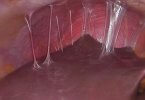What's in this article?
What is Ankle pain?
The Ankle pain is the meeting of the bones of the leg and the foot and is responsible for the up and down motion of the foot. In popular usage, the ankle is often considered to be the ankle joint plus the surrounding anatomic region, including the lower end of the leg and the start of the flat part of the foot. Pain in the ankle can result from inflammation or injury to any of the structures in this region, including the bones, joint space, cartilage, ligaments, tendons, or muscles. Ankle pain can be associated with other symptoms including
- ankle swelling,
- numbness or tingling,
- instability,
- burning pain,
- inability to bear weight on the affected ankle,
- stiffness,
- weakness.
Common causes of ankle pain include sprains or injuries. Rheumatoid arthritis, gout, osteoarthritis, and other types of arthritis can also cause ankle pain. Achilles tendonitis is another potential cause.
Causes of Ankle Pain
A sprain is a common cause of ankle pain. Pain can also be a result of:
- arthritis (specifically osteoarthritis)
- gout
- nerve damage or injury, such as sciatica
- blocked blood vessels
- infection in the joint
A sprain is generally caused when the ankle rolls or twists so that the outside ankle moves toward the ground, tearing the ligaments of the ankle that hold the bones together. Rolling the ankle can also cause damage to the cartilage or tendons of your ankle.
Gout occurs when uric acid builds up in the body. This higher than normal concentration of uric acid (a by-product of the body’s normal breakdown of old cells) can deposit crystals in the joints, causing sharp pain. Pseudogout is a similar condition where calcium deposits build up in the joints. Symptoms of both gout and pseudogout include pain, swelling, and redness.
Arthritis can also cause ankle pain. Arthritis is the inflammation of the joints. Multiple types of arthritis can cause pain in the ankles, but osteoarthritis is the most common. Osteoarthritis is often caused by wear and tear on the joints. The older people are, the more likely they are to develop osteoarthritis.
Septic arthritis is arthritis that is caused by a bacterial or fungal infection. This can cause pain in the ankles, if the ankles are one of the areas infected.
Home Care Treatments
Home care for ankle pain depends on the cause and what other treatment or surgery has taken place. You may be asked to:
- Rest your ankle for several days. Try to NOT put much weight on your ankle.
- Put on an ACE bandage. You also can buy a brace that supports your ankle.
- Use crutches or a cane to help take the weight off a sore or unsteady ankle.
- Keep your foot raised above the level of your heart. When you are sitting or sleeping, place two pillows under your ankle.
- Ice the area right away. Apply ice for 10 to 15 minutes every hour for the first day. Then, apply ice every 3 to 4 hours for 2 more days.
- Try acetaminophen, ibuprofen, or other pain relievers made by the store.
As the swelling and pain improve, you may still need to keep extra weight stress off your ankle for a period of time.
The injury may take a few weeks to many months to fully heal. Once the pain and swelling are mostly gone, the injured ankle will still be a little weaker and less stable than the uninjured ankle.
- You will need to start exercises to strengthen your ankle and avoid injury in the future.
- DO NOT begin these exercises until a health care professional tells you it is safe to start.
- You will also need to work on your balance and agility.
Other advice your health care provider may give you include:
- Lose weight if you are overweight. Extra pounds put strain on your ankles.
- Warm up before exercising. Stretch the muscles and tendons that support the ankle.
- Avoid sports and activities for which you are not properly conditioned.
- Make sure that shoes fit you properly. Avoid high-heeled shoes.
- If you are prone to ankle pain or twisting your ankle during certain activities, use ankle support braces. These include air casts, ACE bandages, or lace-up ankle supports.
- Work on your balance and do agility exercises.





